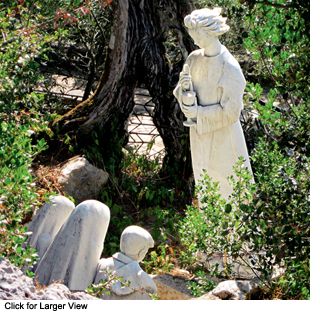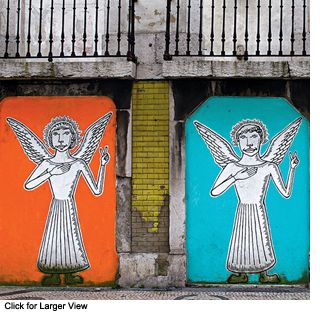Travel to Portugal with Angels on Earth

April 25 marks the Portuguese national holiday Freedom Day. During the peaceful 1974 coup known as the Carnation Revolution, citizens took to the streets with these ruffled, red flowers and effectively brought democracy to their country. As you’ll see here, the people of PORTUGAL love angels as much as they love red carnations.
Sanctuary of Fátima, Fátima, Portugal
In 1916 during the spring and summer, three shepherd children in the village of Fátima witnessed three visions of an angel known as the Angel of Peace, sent to prepare the children for a coming apparition of the Blessed Mother. This statue, by Portuguese artist Maria Amélia Carvalheira da Silva, is located on the site of the angel’s first appearance. Over a million pilgrims travel to see it every year.
Capela das Almas Church, Porto, Portugal
In the fifteenth century, King Manuel I of Portugal was so enchanted by the glazed-tile work he saw in Spain’s Alhambra palace that he had his own home in Sintra decorated in the same fashion. Since then the beautiful tiles called azulejos have become a pervasive part of Portuguese culture. You’ll find them everywhere, from churches to offices to homes. Some tiles are painted in complex geometric patterns. Others depict historical scenes, biblical stories or sometimes–yes, angels too.
Baixa District, Lisbon, Portugal
Many cities try to scrub off graffiti wherever it appears, but in Lisbon there’s a different approach. The Galeria de Arte Urbana is a government project that promotes and in some cases even funds street art. The result is a sprawling, citywide gallery of hidden treasures for tourists and locals alike to discover as they walk around. Much of the art, like this angel mural, has a modern flavor, in striking contrast to the cobblestone side streets, whitewashed buildings and traditional red-tile roofs.
Did you enjoy this story? Subscribe to Angels on Earth magazine.


